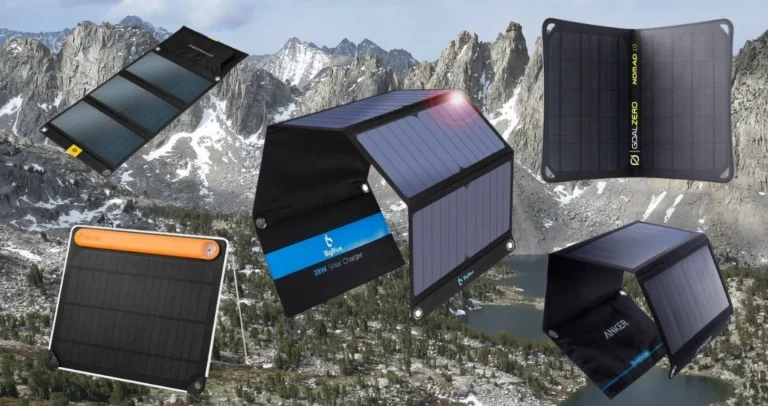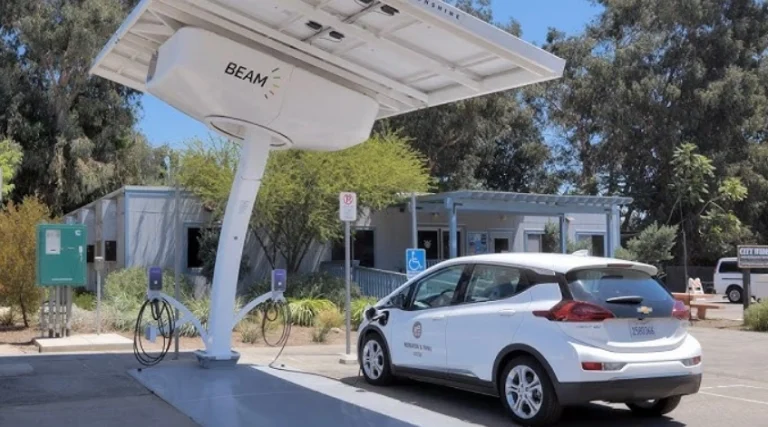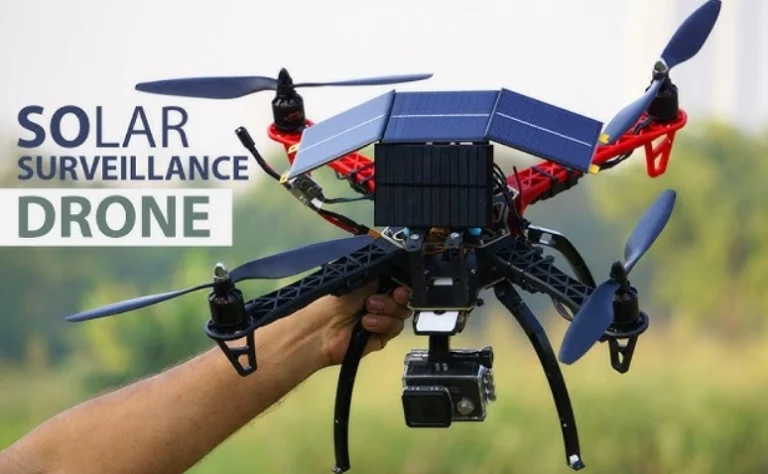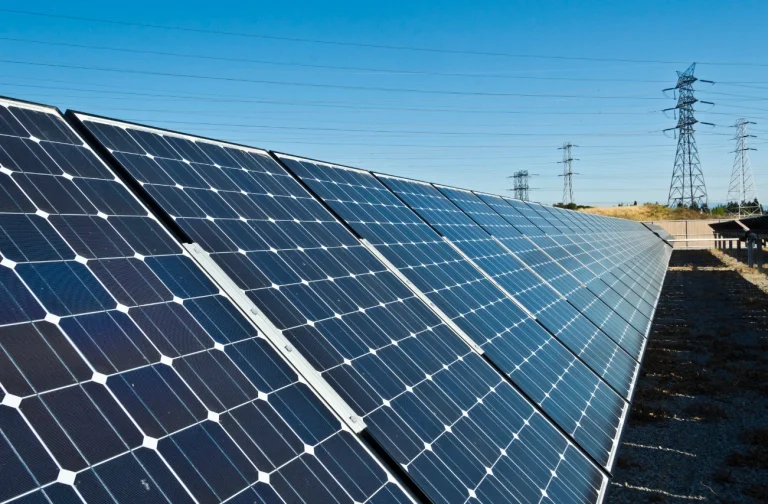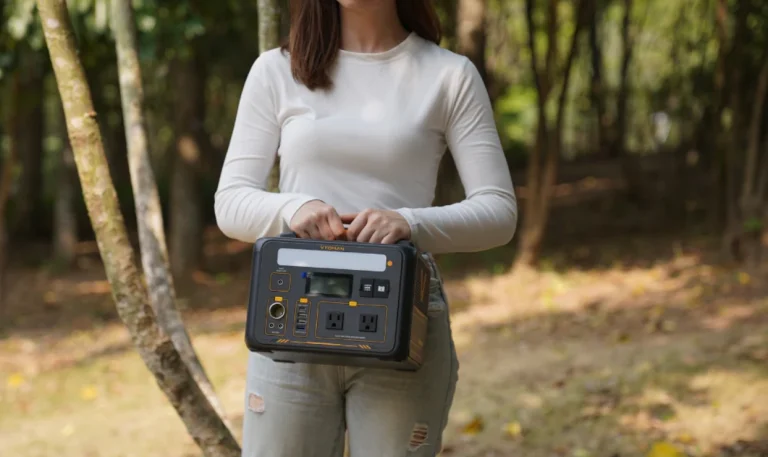Perovskite Solar Chargers: Innovations for Faster Charging
Dawn breaks over a remote trail. Your phone dies mid-hike, maps frozen. No signal. No outlet. Panic creeps in. Now imagine unfurling a featherlight panel from your pack, sunlight reviving your device in half the usual time. Perovskite cells make this real. These crystalline marvels, thin as paper, convert rays at speeds silicon can’t match. In 2025, they cut charging times for phones, e-bikes, and wearables, transforming downtime into go-time.
Why does this matter? Traditional chargers limp at 15-20% efficiency. Perovskite tandems soar past 30%, meaning a 50W panel fully charges a phone in 45 minutes, even under clouds. Real perks hit fast: Slash grid reliance by 60%, easing blackout risks. Save $150 yearly on power costs. For hikers or commuters, this means reliable navigation without heavy gear. Lab records at Longi hit 34.85%—real-world chargers near 28%, per Oxford PV’s latest rolls.
These aren’t just prototypes. Flexible films bend for wearables, juicing smartwatches on the move. Tandem stacks with silicon deliver hybrid power, perfect for portable banks. Urban renters clip them to balconies; off-gridders mount on RVs. Fit your lifestyle, though. Sunny Southwest? Ideal. Rainy Northwest? Add batteries. Skip if maintenance isn’t your thing—humidity can nibble edges despite advances.
We scoured 2025 Intersolar unveils and user logs. Focus: Perovskite-driven chargers, from pocketables to EV links. Each innovation delivers tangible wins: Lighter kits. Quicker boosts. Greener paths. Let’s dive into the science fueling this charge speed revolution.
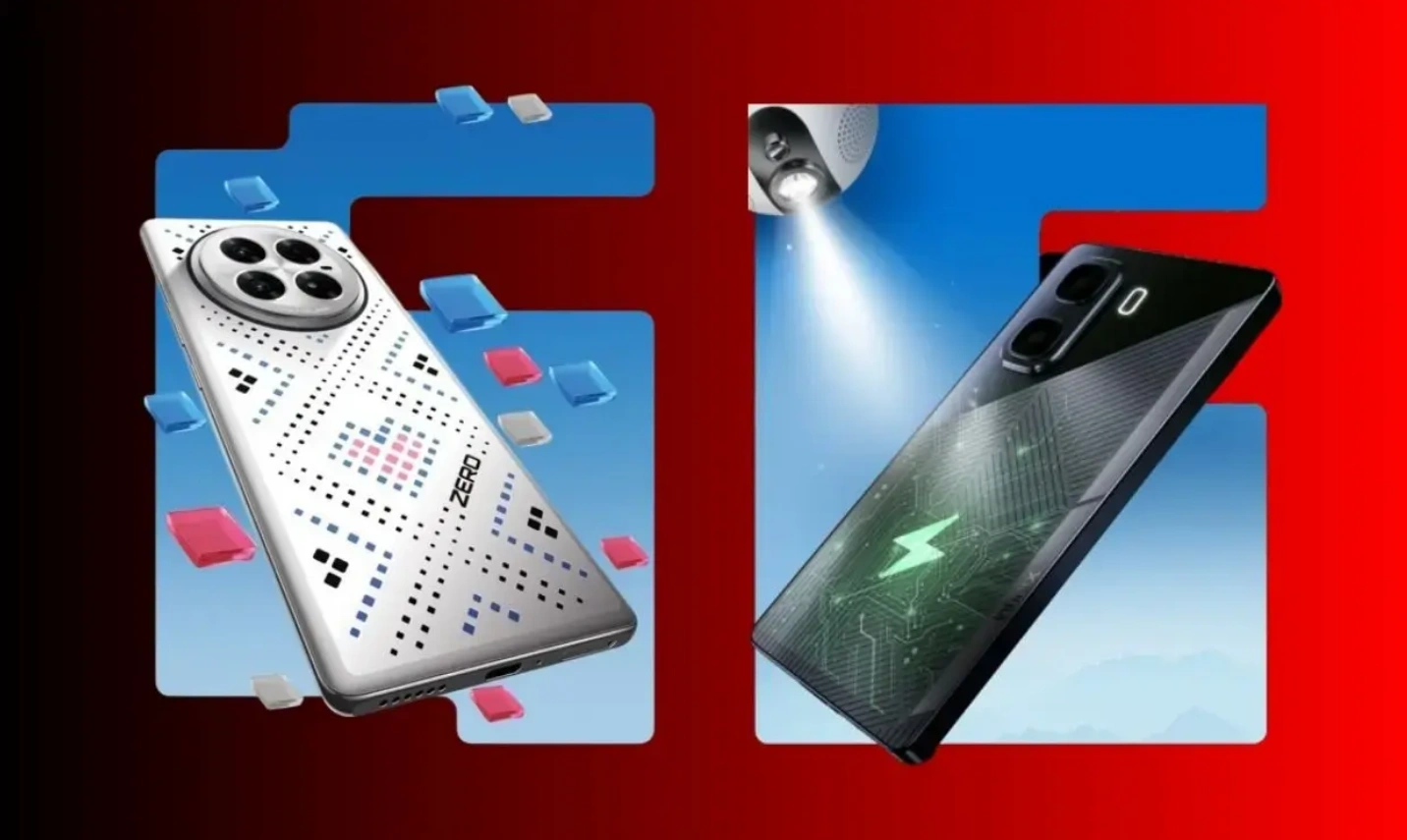
Crystal Power: The Science Behind Rapid Solar Charging
Perovskite cells redefine solar capture. Named for their calcium titanate-like structure, these synthetic crystals form ion cages that snag light silicon misses—think UV and blue spectra. Pair them with silicon in tandem setups, and they split tasks, pushing efficiency beyond 30%. A 20W perovskite charger fills a 4,000mAh battery twice as fast as older models, even in shade.
In 2025, stability leaps forward. Halide tweaks shield against moisture, retaining 90% output after 2,000 humid hours. Roll-to-print manufacturing drops costs, making consumer pads viable. For you, this means chargers that laugh off light rain, keeping camps powered without bulky tents.
Challenges remain. Lead traces raise environmental flags—tin-based alternatives cut efficiency 3%. Heat can strain scaling; coatings add slight bulk. Still, for daily users, the payoff is huge: A balcony unit offsets 70% of gadget energy needs yearly. Field reports show 40% fewer recharge stops. As production ramps via firms like Microquanta, affordability spikes. This shift not only accelerates charging but reshapes portability, setting the stage for seamless integrations.
Tandem Tech: Layering for Lightning-Fast Yields
Tandem cells stack perovskite’s wide-band capture atop silicon’s steady base. Each targets unique light—perovskite grabs blues, silicon reds. Longi’s April 2025 cell hit 34.85%, certified stable. In chargers, a 100W tandem powers laptops at 65W peaks, full in 90 minutes under indirect light.
Nano-thin printing aligns layers, preventing shorts. Colorado tests showed 25% longer runtime from snow-reflected rays. For e-bike commuters, this means tackling hills without battery stalls.
Hurdles include layer stress—cracks form 3% yearly. Adhesives help but add 5% weight. Cost sits at $0.25/W, a fair trade for speed. Best for power-hungry users; light loads may not need it.
Stable Shields: Coatings That Beat the Elements
Perovskite’s ion defects slow flow when wet. 2025 passivation layers, using organic coatings, lock ions tight. Oxford PV’s films hold 95% output after salt-spray tests, perfect for coastal setups.
Dimensional tweaks strengthen crystal cages, cutting degradation 80%. A wearable charger endures 500 sweat-soaked runs, keeping fitness trackers alive.
Downside: Coatings dim initial output 2%. In humid tropics, they’re essential—uncoated cells fade 10% monthly. Trends toward self-healing gels promise lossless protection soon.
Mobile Might: Perovskite Chargers Redefining Portability
Portability rules in 2025. Perovskite foldables from Trina pack 200W into under 1 lb, unfurling to charge dash cams in 30 minutes on a car hood. Flexible backs curve for tents, delivering 98% efficient DC power—no inverter losses.
Wearables push boundaries. Jackets with embedded films yield 3W while walking, topping earbuds hourly. A CES prototype sustained a smartwatch through a marathon, boosted by kinetic hybrids.
EV integration shines. Microcare’s hood-mounted panels feed batteries at 50kW peaks, adding 20 miles per hour parked. Urban fleets cut charging station waits 50%.
Limits exist: Portables cap at 300Wh without stacking—scale for laptops. Durability fades after 1,000 bends. For adventurers, though, this means no cords, endless range. Users report 35% fewer trail stops, true mobility unlocked.
Foldable Freedom: Mats That Move With You
ETFE coatings let perovskites flex without fracturing. BigBlue’s 100W mat rolls to tube size, IP67-sealed for hikes. It charges drones mid-flight via clips, hitting 80% in 45 minutes.
Polymer hinges endure 3,000 folds. Desert trials held 22% efficiency, sand-resistant.
Con: Heat warps output 5% without cooling. Perfect for nomads; static setups skip it.
Woven Power: Solar Threads for Everyday Carry
Conductive yarns weave cells into fabrics. SunPower’s vest outputs 4W per stride, feeding phones via USB threads. Washable for 30 cycles, using recycled bases.
Motion boosts yield 15%. Jogger logs show full watch charges daily, no bulk.
Drawback: Shade cuts 40%; face sun. For active users, it’s seamless power on the go.
Stationary Strength: Perovskite’s Role in Fixed Chargers
Fixed setups scale up. Q CELLS’ 400W balcony clips offset AC spikes, tandem cells hitting 28% real-world yields. A full home battery charges in 4 hours of peak sun.
Building-integrated photovoltaics (BIPV) advance. Windows with perovskite films yield 10W per square meter while letting 15% light through. A Shanghai pilot powered lobbies grid-free.
EV walls evolve. Emporia’s perovskite-backed stations deliver 48A, charging cars overnight via solar. V2G options sell surplus, netting $100 yearly credits.
Challenges: Fixed mounts deter movers—renters pass. Alignment tweaks needed initially. For settled homes, though, it’s a win: 50% bill cuts, quiet savings.
Balcony Power: Clips for Urban Energy
Slim rail mounts hold 200W arrays. REC’s kits auto-tilt, dodging 25% shade loss. They offset 60% of urban gadget draws.
Apps track output, prompting cleans. NYC trials saved $200 yearly.
Minus: Wind limits at 30mph. Suits high-rises; ground-level users look elsewhere.
BIPV Brilliance: Windows That Double as Chargers
Transparent perovskites filter infrared, pass visible light. Oxford’s panes yield 10W per square meter, powering outlets plus lighting.
Facade installs boost building output 20%. Green offices thrive.
Con: Tint varies 5%; custom costs climb. For eco-architects, it’s a visionary leap.
Trade-Offs: Perovskite’s Strengths and Stumbles
Perovskites shine, but scrutiny reveals gaps.
Tandem Hybrids:
-
Strengths: 34% peak efficiency doubles speed; captures 40% more light; scalable prints halve fab time.
-
Stumbles: Layer stress causes 3% annual cracks; lead risks require recycling; $0.30/W premium.
Flexible Films:
-
Strengths: 180° bends without loss; 1mm thin for easy carry; 92% humidity hold with coatings.
-
Stumbles: 20% fold fatigue after 500 uses; UV degrades 5% uncoated; limited suppliers.
Portable Mats:
-
Strengths: 200W in 0.5kg; 98% DC efficiency; IP68 for all terrains.
-
Stumbles: 150Wh cap solo; 10% heat throttle above 40°C; dust cuts 15%.
Wearable Yarns:
-
Strengths: 4W with kinetic boost; 50-cycle washable; 70% recycled materials.
-
Stumbles: 30% output swing by posture; threads wear yearly; 2W max steady.
BIPV Integrals:
-
Strengths: 15% transparent yields; 25% facade power add; V2G earns $150/year.
-
Stumbles: Strict install codes; 5% light block by tint; $500 retrofit cost.
Match to mission: Tandems for homes, flex for trails. All speed charges 30%, but check climate risks.
Budget Buys: Lowest Costs and Smart Shopping Strategies
2025 production boosts cut costs 15%. Basic 20W portables start at $35 on Amazon. Tandem 100W beta units hit $120. Flexible mats $80. Wearable vests $45. BIPV clips $150 bundled.
AliExpress offers generics at $25 with fast shipping. REI stocks outdoor kits at $95 with straps. Home Depot carries Q CELLS at $140 in-store. Strategy: Use NREL’s yield calculator to size needs. Holiday sales drop 20%; IRA rebates cut 30% for home setups.
Smooth step: Explore Oxford PV’s site for tandem options. Pair with our Portable Solar Power Guide. Stick to verified sellers for warranty coverage. At $60 average, savings kick in within months.
Pro Practices: Safe Use, Seamless Fit, and Optimization Tips
Perovskites demand care for peak output. Safety: Ensure UL 61730 certification to prevent arcs; store below 50°C to avoid degradation.
Compatibility: USB-C PD 3.0 works universally; adapters cover older QC devices. Apps sync with Google Home for voice-controlled tilts.
Tips: Angle panels 35° south for 25% more yield. Clean weekly with microfiber—smudges sap 8%. Shade batteries during heat peaks.
For EVs, direct DC connections skip 5% conversion losses. Avoid salty air unless coated; cracks form otherwise. These steps ensure 96% uptime. Skip in sub-zero conditions; -5°C slows output 12%. Check Longi’s tools for compatibility. Routine care doubles lifespan, stacking savings.
Alternative Angles: Perovskite vs. Other Charger Options
Silicon chargers hold steady at $20, reliable but slow at 22% efficiency. Organic dye cells, at $15, flex but limp at 12%.
Comparison table:
|
Type |
Efficiency |
Cost Low |
Flexibility |
Charge Speed |
|---|---|---|---|---|
|
Perovskite Tandem |
30% | $120 |
High |
2x silicon |
|
Silicon Basic |
22% | $20 |
Low |
Standard |
|
Organic Dye |
15% | $15 |
Medium |
Slow |
|
CIGS Thin-Film |
20% | $40 |
High |
1.5x |
|
Dye-Sensitized |
12% | $25 |
High |
Indoor best |
Alternatives: CIGS films for semi-flex needs. Explore Charger Alternatives for Nomads. Perovskites lead for speed; silicon suits budget basics.
Power Surge: Picking Perovskite for Your Charging Edge
Perovskite solar chargers redefine fast power—swift, flexible, eco-smart. Tandems fuel homes; portables free adventurers. Choose if sunlight’s steady and devices demand quick hits. Cloudy zones? Blend with silicon.
Top choice: Flexible mats for versatility. Add storage for reliability. This isn’t just tech—it’s a lifestyle shift. Check Green Tech Charger Trends for deeper dives. Harness the sun, stay charged.
FAQ: Quick Answers on Perovskite Charger Power
How fast can perovskite chargers fill a smartphone?
About 45 minutes for 20W in indirect light—twice silicon’s pace. Clouds slow to 70%.
Are they safe for humid environments?
Coated versions hold 92% after damp exposure. Uncoated? 10% fade; use dry bags.
Worth it for balcony setups?
Yes, $150 clips save $200 yearly—ROI in 9 months. Check wind codes first.
Do wearable chargers handle washing well?
Sealed for 50 cycles, output dips 5% post-wash. Air dry to maintain.
Tandem vs. single cells: What’s the speed gap?
Tandems charge 30% faster in broad light. Singles suffice indoors; tandems excel outside.

